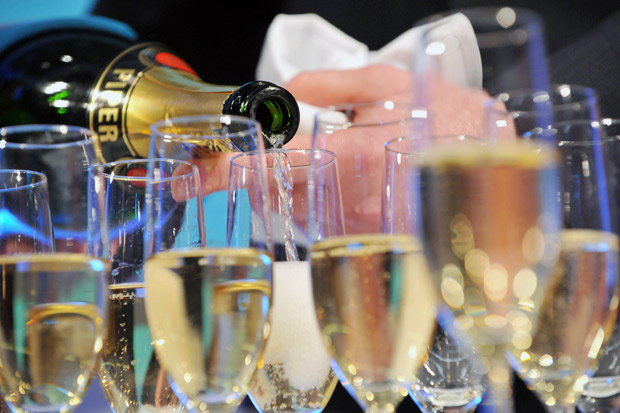OTTAWA – It took six French scientists and a lot of free samples to prove this, but the official word says you should pour champagne down the side of a tall glass to preserve the fizz and the flavour.
Bubbles also last longer when your champagne is really cold – about four degrees Celsius.
Champagne contains a lot of carbon dioxide gas, dissolved in the wine and kept there under pressure until the cork pops. Champagne holds on average nine grams of CO2 per bottle, the equivalent of five litres of gas once it is released into the air.
This is necessary to give champagne the sensation of bubbles popping on your tongue, and the taste and delicate smell.
But bubbles never last. Pour champagne into a glass and liquid bounces off the bottom. It splashes. It forms internal swirls and eddies.
All this, say the authors, releases dissolved gas. Or, in scientific terms: "Suffice to say that pouring champagne into a glass is strongly suspected to be far from being consequenceless with regard to its concentration of dissolved CO2 after pouring."
("Far from consequenceless?" That’s what happens when you let champagne flow in a science lab.)
The analysis in the Journal of Agricultural and Food Chemistry uses fast photography, infrared light, diffusion coefficients and a lot of equations with Greek letters to measure what happens to bubbles with different pouring methods.
Skipping the equations, it turns out that pouring gently down the side of a glass preserves about twice as much carbon dioxide (bubbles) as pouring straight down to the bottom of the glass.
But that wasn’t all: The shape of the glass also matters. Tall "flutes" preserve bubbles far better than the wide, shallow glasses sometimes used in North America.
And bubbles stay longer if the champagne is really cold – which affects both the density of the wine (cold is more dense) and its surface tension.
Ottawa sommelier Sean Moher, of Groovy Grapes, a firm that organizes wine tasting for entertainment, has been treating champagne this way for years.
"Those three things (tall flutes, temperature and pouring gently) are yup, yup, yup," he said.
"We probably don’t know the science behind it as much, but all those things seem like the basics. It’s all about keeping the bubbles. If you pour it in gently, more of it (carbon dioxide) is going to stay in the glass.
"But I definitely think the scientific part of this is breaking news."
Many sommeliers practise these techniques "because somebody told you to do it that way, or you read it in a book."
He adds another pointer: Don’t open the bottle until you’re ready to drink it.
The French scientists acknowledge the generous support of the Pommery champagne house, which provided free samples "regularly."
Alas, there are still unanswered questions about the fluid dynamics of champagne, and research must continue in 2011. It’s a tough life.

- Canada’s dental plan has officially kicked in. Who is eligible?
- Mandatory breath samples now required in every Toronto-area traffic stop: OPP
- Tories grill Liberals in question period about minister’s ties to lobbyist, PPE company
- N.S. mother ‘in shock’ after enduring 17-hour hospital wait with sick baby



Comments